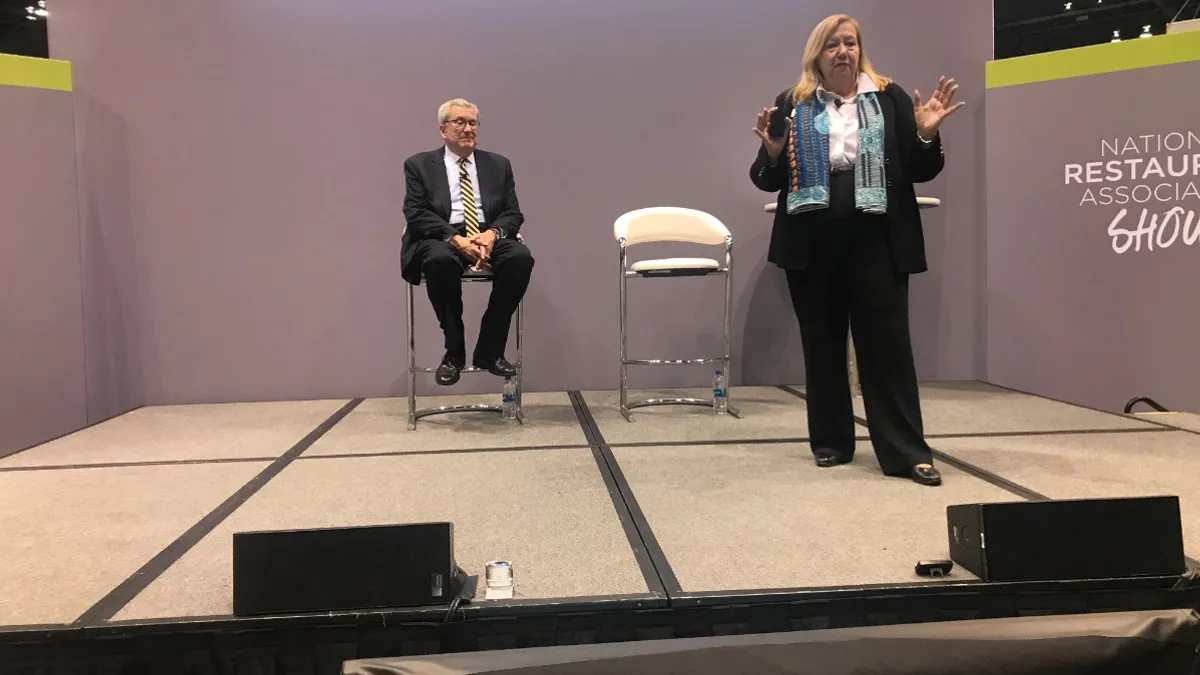Dive Brief:
- Seventy-eight percent of restaurant operators say off-premise business is becoming a strategic priority and 74% are investing more in off-premise programs, according to a survey of 400 operators shared by Technomic principal Melissa Wilson during the National Restaurant Association Show.
- Of these operators, 92% said off-premise has helped generate additive sales, 87% said they have added new customers, 81% said off-premise has increased profitability, 68% said it has increased average check and 68% said it has impacted operations, she said.
- Sixty-six percent of restaurants now offer third-party delivery compared to previous surveys where 44% of restaurants were offering or considering it, and 57% said it was more important than it was two years ago. Curbside pick-up operations also are likely to increase, with 67% saying curbside pick-up is more important than it was two years ago and about a quarter of operators currently offer them.
Dive Insight:
From front-of-house to the back, the impact of off-premise is tough to ignore these days.
"Off-premise now accounts for a majority of restaurant occasions and will continue to grow. It's not going to shift back," said Hudson Riehle, senior vice president of the research & knowledge group for the National Restaurant Association, during a presentation with Wilson during the NRA Show.
Of the stats he threw out, a few stood out. Fifty-eight percent of restaurant occasions are now off-premise, which he defined as drive-thru, carry out, delivery and curbside pick-up.
He also cited a separate survey of 1,500 consumers, where 39% said they use the drive-thru, 34% order delivery and 29% get takeout. Looking specifically at the coveted 18 to 34-year-old segment, 44% are ordering delivery, he said.
Riehle noted that cocooning, or the preference to stay in the home or office, is one of the biggest reasons the industry is seeing a jump in delivery. Paired with lack of time and speed of service, and the segment is ripe for even more growth, he said.
"If you think about weather being bad, there is nothing more convenient than to have the restaurant come to them," he said.
These factors are helping several chains, who are seeing their off-premise boom. Noodles & Company, for example, saw the segment increase 56% during the first quarter, and it now makes up 22% of sales. Potbelly's reported that off-premise made up 21% of sales, and Chuy's business includes 13.6% of off-premise sales.
While off-premise brings in sales and new customers, restaurants are playing a bit of catch-up to keep up with operational issues that come with a high growth area. Delivery creates traffic during times when kitchens are normally quite slow, especially late at night, Wilson said. Because of these shifts, forecasting for prep and production is a real challenge. Many restaurants are no longer able to easily predict when orders come in and prepare for their staffing needs, Wilson said.
They also are forced to rethink packaging, which is now used to maintain food quality instead of containing leftovers, she said. Chains, such as McDonald's and Dog Haus, are looking at packaging that can help improve the food quality to make sure that it arrives at the right temperature and is similar to what a diner would get if they dined in.
Off-premise also impacts the front-of-house. Customer ordering systems need to be updated. Locations need to be redesigned for flow, from the optimal location for third-party pick-up to placement of takeout condiments, Wilson said. Restaurants are forced to innovate around the disruption, installing pick-up shelves, for instance, to streamline traffic. Those shelves — now seemingly an industry standard — line store walls from Chipotle to Panera. In addition, the burrito chain and Cava are looking to add drive-thru pick-ups for mobile orders.












